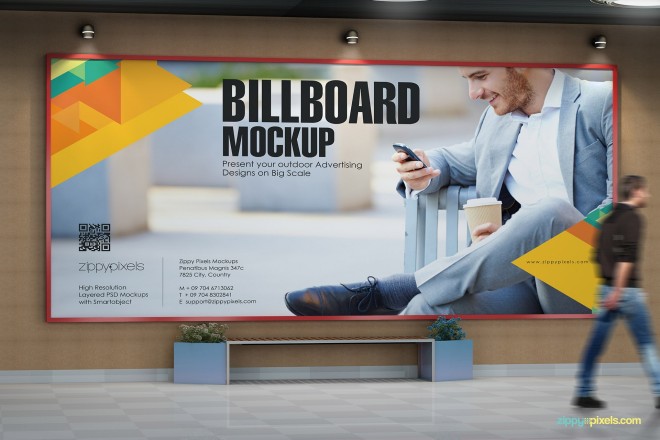介绍

在繁忙的城市节奏中,地下步行通道已成为城市交通网络的重要组成部分,其不仅承载着行人的日常通行,更是城市文化与信息传播的潜在空间。
随着 LED显示屏 随着LED显示屏技术的发展,为了提高引导效率、增强视觉吸引力,人们开始探索其在地下通道的应用。但这样的技术应用是否可行呢?
1、LED显示屏在地下人行通道中有哪些潜在优势?
LED显示屏确实给地下人行通道带来了不少好处,让我们的日常出行变得更加便捷有趣。下面,我们来谈谈它的亮点:
1). 清晰悦目
地下通道灯光昏暗,但LED显示屏亮度很高 亮度 且色彩鲜艳,引导信息一目了然。
而且它还可以动起来,不像以前静态的招牌那么单调,动画、渐变色让通道看起来更有活力,走在其中心情也会好很多。
2). 信息量大,效率高
LED显示屏不仅可以指引方向,还可以告诉路人最新消息、天气预报,甚至附近的交通状况。这样,当我们在等地铁或者过马路的时候,就不会觉得无聊,还能了解到一些实用的信息。
特别是在遇到紧急情况时,显示屏能够立刻发出警报,引导我们安全撤离,真是方便又安心。
3).城市文化展示窗口
别忘了,LED显示屏也是展示城市文化的好地方,可以播放具有当地特色的视频,介绍历史、民俗,让我们这些生活在城市的人更加了解自己的家乡。
有时候,还可以看到一些艺术设计,真的很吸引人眼球,感觉我们的城市变得越来越有趣了。
2、地下人行道安装LED显示屏有哪些技术和安全要求?

1). 技术要求
1.1). 照明及引导适应性
- 光源适应性:
地下人行通道内光线比较昏暗,因此LED显示屏需要有足够的亮度,以保证通道内导引信息清晰可见。
同时,显示屏的亮度应能根据通道内的光线变化自动调节,避免因过亮或过暗造成人身不适。
- 引导信息优化:
显示屏上的诱导信息应简洁、易于识别,字体大小、色彩对比度等设计应充分考虑行人在通道中行走时的视觉需求,确保信息一目了然。
1.2). 散热及防护特性
- 散热性能:
地下人行通道通常相对封闭,散热条件有限,因此显示屏应具有高效的散热系统,如内置散热风扇或散热器等,以保证设备在长期工作下能保持稳定的性能。
- 防潮防水设计:
地下环境比较潮湿,显示屏外壳应采用防水材质,并具有防水等级(如IP65),防止湿气侵入内部电路,造成短路或损坏。
- 防虫防霉措施:
显示屏四周应设置密封条或防尘网,防止虫害和霉菌侵蚀。同时,应定期清洁显示屏,保持其表面清洁,减少霉菌生长的机会。
1.3). 电源 和线路布局
- 稳定的电源电压:
地下人行通道的供电可能会受到一定的限制,因此显示屏的供电电压应稳定,避免因电压波动造成设备损坏。
- 线路安全布局:
供电线路应合理布设,避免穿越人行步行道,减少安全隐患,同时线路应采用阻燃材料,防止火灾。
- 过载和短路保护:
电源线应设有过载和短路保护装置,保证设备发生故障或异常时,能及时切断电源,防止火灾或触电事故。
2).安全要求
2.1). 电气安全
- 绝缘和接地:
显示屏的电气系统应具有良好的绝缘性能,并应设置可靠的接地系统,以防止因电气故障而引起触电危险。
- 电气隔离:
显示屏内部电路应进行电气隔离,保证行人触摸显示屏时不会受到电击伤害。
2.2). 结构安全
- 稳定的支撑结构:
显示屏的支撑结构应具有足够的强度,能够承受显示屏的重量以及行人触碰或碰撞时产生的冲击力。
- 合理的安装位置:
显示屏应安装在行人不易碰撞的位置,避免造成意外伤害,同时要考虑行人的视线高度,保证导视信息易于识别。
2.3). 环境适应性
- 温湿度控制:
地下人行通道内的温度和湿度可能较高,显示屏应能在这种环境下正常工作。
因此应选择适应高温、高湿环境的LED显示屏,并进行定期的维护和保养。
- 防尘、防腐蚀:
在粉尘较多或有腐蚀性气体的地下人行通道中,应采取措施保护显示屏不受损坏,如使用防尘罩、涂防腐漆等。
2.4). 消防安全
- 防火材料:
显示屏及其周围材料应采用符合防火标准的材料,以降低火灾风险。
- 防火隔离:
在显示屏周围设置防火隔离带或增加防火罩,防止火势蔓延至其他区域。
2.5).维护及操作安全
- 定期维护:
定期对显示屏进行清洁和保养,确保显示屏表面没有灰尘和污垢。同时检查显示屏的散热系统、电源线等是否正常工作。
- 操作规范:
制定并遵守正确的开关屏操作步骤及日常维护保养规程,操作过程中确保不会因误操作而伤害行人。
- 培训和教育:
对操作人员进行专业的培训教育,使其了解显示屏的工作原理、安全操作规程、紧急应急措施。
3、地下人行道安装LED屏幕有哪些局限性和挑战?

地下人行道安装LED屏不仅是技术与美学的融合,还需要结构设计、防水排水、灯光设计、通风条件等多方面综合考虑。
1).结构设计基准期及安全水平的考虑
1.1). 结构设计基准期
- 长期稳定性:
地下人行道的结构设计参考年限往往较长,通常要求50年甚至更长,因此在安装LED屏时,需要保证其结构设计和安装方式能够长期保持稳定,不对原有结构造成任何破坏。
- 专业设计:
显示屏的安装位置和安装方式必须经过专业设计团队精心规划和计算,确保与地下人行道整体结构协调,满足安全性、稳定性和美观性的要求。
1.2). 安全等级
- 高标准要求:
地下人行道作为人流密集的公共场所,安全等级要求极高,LED屏的安装必须严格遵守相关的安全标准与规范,确保在正常运行及突发情况下不会对行人造成伤害。
- 电气安全:
显示屏的电气系统需具有极高的绝缘性能和可靠的接地系统,以防止因电气故障引起的触电危险。
同时,应定期对电气系统进行维护和检查,确保其处于良好的工作状态。
2).防排水设计要求
2.1).防水要求
- 高防水等级:
地下人行道环境潮湿,LED显示屏需具有极高的防水等级(如IP67以上),防止湿气侵入内部电路,造成短路或损坏。
- 防水密封设计:
显示屏的外壳应采用防水材质,并有防水密封设计,保证在潮湿环境下仍能正常工作。同时显示屏的接口和连接线也应采用防水接头和防水电缆,保证整个系统的防水性能。
2.2). 排水要求
- 改善排水系统:
地下人行道的排水系统必须完善,防止积水损坏显示屏。
排水系统应包括雨水收集、排放、清理等功能,保证在暴雨等极端天气下积水能及时排出。
- 合理的安装位置:
显示屏的安装位置应避开低洼区域及容易积水的区域,减少积水的可能性。同时应在显示屏背面及侧面设置排水孔或排水槽,以便及时排出内部积水。
3).照明设计标准及通风要求
3.1). 照明设计标准
- 亮度和均匀度:
地下通道照明设计需要满足一定的亮度、均匀度、眩光限制等要求,保证行人的安全和舒适。
LED显示屏的亮度需要与地下走道的灯光设计相协调,避免过亮或者过暗造成不适。
- 自动调整:
显示屏应具有自动亮度调节功能,能根据环境光的变化自动调节亮度,保证在任何光照条件下都能清晰看清信息。
3.2). 通风要求
- 良好的通风条件:
地下人行通道通风条件相对较差,容易积聚湿气和有害气体。
因此在安装显示屏的时候必须考虑通风的要求,保证设备能保持良好的散热和空气流通。
- 散热设计:
显示屏外壳设计可采用镂空或者散热片等结构,增加散热面积和通风效果。
同时,可在显示屏周围设置通风孔或风道,及时排出内部的热量和湿气。
- 定期维护:
为了保证显示屏的正常工作,延长其使用寿命,需要对显示屏进行定期的保养和清洁。
包括清洁显示器表面的灰尘和污垢、检查散热系统和通风孔是否通畅等。
结论
经过对地下人行通道LED显示屏安装的全面分析,我们可以得出结论:虽然存在一定的技术和环境挑战,但在遵循严格的安全和设计标准的前提下,这种安装是完全可能的。
LED显示屏的引入,不仅可以提高地下通道的导向性和美观度,还可以给城市增添一丝现代科技气息。
最后,如果你想了解更多关于LED显示屏的信息, 请与我们联系。
